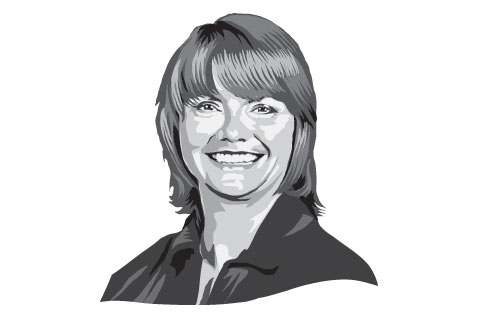April 01, 2019
The Future of the Promotional Products Industry
We asked 10 of the industry’s most prescient leaders – five suppliers & five distributors – to offer predictions on what the promo marketplace will look like in the next 5-10 years.
Presidents, owners, CEOs, M&A magnets, visionary industry veterans, charismatic iconoclasts, mouthy upstarts and under-the-radar stalwarts, the following 10 promo pros each have a unique vision of the future of the market – whether it be a firm belief that the business better up its technology game (and fast), the real reason why private equity has a sudden affinity for our best and brightest companies, and if Amazon really is a harbinger for the industry’s death rattle (or not).
65 Years of Counselor: Get more coverage here!
Jo-an Lantz
President/CEO of Geiger (asi/202900)
A member of Counselor’s Power 50 list, Lantz is the first non-family member to take the helm of 141-year-old, fifth-generation Geiger, and has spearheaded the company’s recent spate of acquisitions, both within North America and overseas. Geiger was the #10 company on Counselor’s 2018 Distributor Top 40 list, with $185.5 million in sales.
“Within the next five years, I see the industry continuing to grow. The usage of promotional products will increase and we’ll expand the definition of our industry, which could include items for resale, licensing and business-to-consumer.
There will be two or more distributors and two or more suppliers with annual sales volume over $1 billion. The gap between the Top 40 and other companies will widen.
Looking forward, we’ll be on a rebuilding mode for the economy and our industry. Somewhere in the next 10 years, there’ll be another recession that’ll rival the recession of 2008/09. We’ll also have a Top 40 supplier that’s also a Top 40 distributor.
E-commerce will simply be how business is done. We won’t even be discussing it.
There will be a third method of transportation as a major carrier (Uber-like but not necessarily Uber), in addition to UPS and FedEx as an option for shipping goods.
In 10 years, one of the firms that exceeded $1 billion in sales will have collapsed. New firms we can’t even imagine will emerge. ASI will undergo a major transformation and will have acquired a different business model in the industry.
And I will retire. But Geiger will remain in the Top 40.”
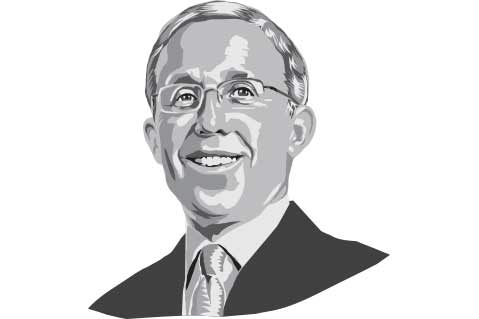
Marc Simon
President/CEO of HALO Branded Solutions (asi/356000)
With Simon running point, no distributor has made the high-value, big-name acquisitions that HALO has in the past five years, and it shows no signs of slowing. Additionally, Simon’s steady hand guided the company through a data breach last year and helped propel its 47.5% sales growth in 2018. Surprising to no one, Simon took the top spot on the 2018 Power 50 list.
“Technology will drive every aspect of the industry in the next 10 years. Buyers will require more robust and more diverse methods to select and purchase products, and follow their orders throughout the order life cycle. Technology will drive consolidation for both distributors and suppliers because the only way to benefit from the necessary investment in technology will be greater scale. Our industry must keep pace with the enhanced buying experience other channels are providing to stay relevant.”
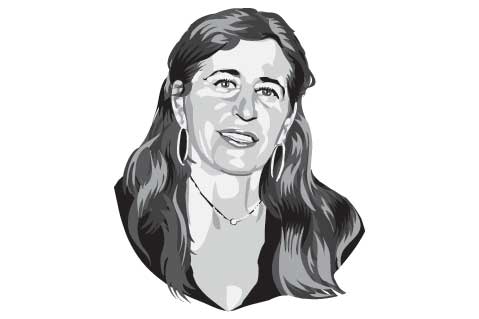
Debbie Abergel
Chief strategic officer/partner of Jack Nadel Int’l. (asi/279600)
The top-ranking woman at the Counselor Top 40 distributor, there’s not a doubt that Abergel runs the company with JNI President Craig Nadel, heading up the vendor relations and compliance initiatives, as well as mentoring JNI’s younger sales stars. Helping the company garner $119 million in sales in 2018, Abergel is a repeat member of Counselor’s Power 50 list.
“This is such an exciting time in the industry, with so much incredible talent along with technological and manufacturing capabilities, and the fact that promotional products have risen in importance as a marketing vehicle where we can be more targeted.
There will be an increase in online distributor and supplier consolidation, and more supplier transparency to end-users. There will also be a growth of creative promotional agencies – the rise and marriage of creativity and custom. Think about corporate clients that invest in giving their clients and employees a true brand product experience; not price-focused, but looking to build their brand name. This will be done through product and product experiences. Two examples are the pussy hats we saw at the women’s march – consider the branding and what it symbolizes – and reusable straws, which show a company’s commitment to the environment.
Clients who take marketing seriously are not going to trust an online promo company to build a campaign for them; they’ll need creative minds.”

Mark Freed
President/CEO of Genumark (asi/204588)
As the head of the largest distributorship in Canada, Freed – a 25-year veteran of the promo business – oversees Top 40 distributor Genumark with its $52.5 million in sales and nearly 18% growth in 2018. Throughout Canada’s prolonged recession, Freed kept Genumark on track and earned himself a repeat spot on Counselor’s Power 50 list.
“I see continuous growth from the large online players that provide a fast, painless, accessible solution for clients looking for simple, inexpensive drop-shipping. I also see continuous growth and consolidation for multifaceted large distributors providing a suite of features that meet a variety of complex requirements for sophisticated clients, which could be related to logistics and fulfillment, quality and compliance, off-the-charts creativity and relentless customer service. There will still be a place for smaller, boutique-size distributors, but they better have a niche like specialized knowledge of the client’s industry or unbelievably innovative ideas because it’ll be difficult to offset the advantages of buying power enjoyed by larger competitors.”
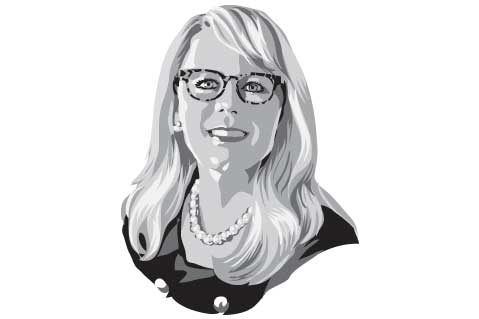
Jana Miller Schmidt
CEO of Harland Clarke (asi/219943)
Heading the San Antonio-based distributor that made headlines for bringing promo to Walmart and Costco, Schmidt was a newcomer to the Counselor Power 50 list, making her debut in 2018.
“It’s all about customer experience. We’ll definitely see consolidation continue with the need to provide a personalized, frictionless experience to businesses as clients seek to promote their brands. There’s separation between having an e-commerce presence and truly building the online buying experience. Creating the best online purchasing and follow-up experience will keep customers coming back. Industry players will look to acquire companies that either extend their capabilities or give them more scale.
Shipping and delivery will become more important to the purchase. All businesses are impacted by the demand for faster shipping, greater visibility into tracking, and the need for ‘free shipping’ at a time when we’re seeing more rate hikes. Alternative shipping services to get product to doors quicker and more cost-effectively are inevitable. Businesses that figure it out with strategic partners or by themselves (unlikely) will come out on top. Suppliers and distributors will continue to converge.
Suppliers and distributors have traditionally been separate business models, and the industry has seen little crossing of paths. We may see that divide begin to unite, including larger suppliers and distributors moving across the value chain to get more of the total pie.”

Yuhling Lu
CEO/owner of Ariel Premium Supply (asi/36730)
As the head of Counselor’s 2015 Supplier of the Year, awarded because of its high ratings with distributor clients, Lu led Ariel to an impressive 22% sales growth in 2018 and continues a steady climb up the list of Top 40 suppliers.
“Consolidation will continue as more and more venture investment groups learn about our industry. While we saw it happen with large companies on the distributor side last year, the trend will most likely continue to favor investment on the supplier side. Part of this means the rise of the ‘mega supplier’ – one that wants to be more things to more people. But there’s only a critical mass allowed here, and certain market forces keep size in check.
The influence of cost structures – raw materials, product safety, logistics, taxation, etc. – will gain even greater significance. The costs of compliance will only increase as the rules become more rigid. But finding and retaining good labor will be the dominant cost conversation. A smaller labor pool and the increased price to acquire better talent will factor greatly into new payroll strategies, compounded even more by the large increase in the minimum wage that many states will experience soon. Ultimately, this will probably lead to new automation technologies.
All other variables being equal, promotional products are possibly poised to gain market share of the total corporate ad spend. That’s because mobile advertising, which was once touted as a bottomless opportunity, sees readers becoming numb to the constant barrage of messages invading even their most personal space, namely their personal phone.
Industry companies will begin to figure out a way to leverage AI, from website and shopping analytics to the ultimate purchase decision.
The financial market’s behavior will influence end-buyer purchasing behavior. Their wild fluctuations, while generally agreed to resemble irrational buying/selling behavior, will play a role in the marketing and branding decisions of corporations. There will be long-term consequences.
Lastly, data management and integrity will gain prominence, and accountability will increase for industry firms.”

Jeremy Lott
President of SanMar (asi/84863)
With over $1 billion in sales and annual wins at the Counselor Distributor Choice Awards in every apparel category, SanMar – under the guidance of Lott and his father, Marty – is the industry gold-standard for what it means to be a true service-driven supplier.
“While digitalization of business will change the way we all interact at every level, the fundamental supplier/distributor relationship will be intact.
The industry will grow to over $30 billion annually as promotional products capture a bigger percentage of advertising spend.
Digital printing will be what we’re all talking and worried about as we get closer to inventing technologies like Star Trek’s Replicator or The Jetsons’ Food-a-Rac-a-Cycle.”

Joe Fleming
President of HUB Promotional Group (asi/61966)
With Fleming brokering major industry deals with acquisitions like Debco, Handstands and Origaudio among others, 2018 saw HUB’s sales increase by nearly 40%, which could make the company a top 10 supplier this year. Fleming’s place on the Counselor Power 50 continues to rise, as does his reputation in the promo space as an influencer who stays under the radar.
“Further consolidation seems to make sense in the next five to 10 years. The cost of funds is low and should remain so for the short term. There’s been robust deal-making by private equity in our industry in the last few years and I don’t see that changing any time soon. There’s still a lot of dry powder or un-invested money waiting in the private equity firms.
The promotional business has historically had a low barrier to entry on both the supplier side and the distributor side. That low barrier gets higher every day as investment in IT, social and safety compliance, and new product development costs increase. Customers expect and demand an easier method to order, faster delivery, better quality product and more spectacular imprints. This smooth promotional products buying experience has investment costs that PE should continue to fuel. Certain online distributors are laser-focused on capturing market share and are willing to trade off some margin to do it. Smaller end-users will continue to become more adept at computer and graphics skills, and online distributors will reap the benefits. Traditional distributors will be forced into a more marketing agency type of role or administering program business, which may include warehousing of product.
We may see Amazon ownership of suppliers further down the road, but I think there’s lower hanging fruit out there for Amazon right now. Our industry is maturing quickly, and I can certainly see Amazon seeking a part of it, but we’ll be a lot more attractive to them after we’re successful in reducing frictional costs.”
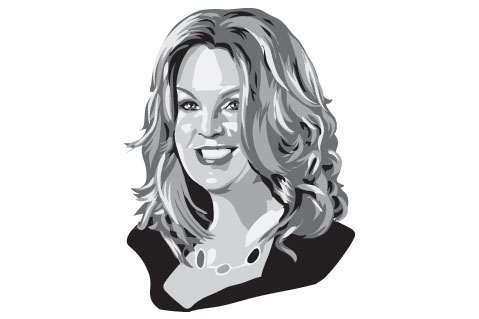
Carleen Gray
CEO of Stahl’s (asi/88984)
With 20 years of industry experience, Gray was promoted to CEO last August, and continues to build Stahl’s brand, service reputation and sales in equal measure. She was a new member of the Counselor Power 50 in 2018.
“Simple quick-turn, one-off print personalization methods have shifted the decades-old order of operations from design, print (massive quantities), ship, sell to design, SELL, print (as needed) ship.
Mass-produced pre-prints will become a thing of the past and the concept of zero-inventory on-demand manufacturing and post embellishment will grow. More on-site capabilities, including heat-print technology, will continue to increase. Dimensional, full-color one-off personalization will grow in popularity since heat-printing’s ease of use and turnkey application is fast and simple. Plus, it can be used on almost any type of garment, including performance wear, in any location.”

Sharon Eyal
CEO/owner of ETS Express (asi/51197)
In addition to winning a court case against S’well over trademark infringement last March, Eyal’s Top 40 supplier company will surpass the $100 million sales mark this year. A mainstay on the Power 50 list, he jumped 12 spots in 2018 due in part to being named Counselor’s Person of the Year.
“The industry will continue to evolve, and mergers and acquisitions will continue, though small distributors and suppliers will experience challenges because the cost of doing business – such as compliance and healthcare – will become too expensive. Consider that ETS spends $300,000-$350,000 a year on product testing, social audits, safety and compliance; smaller companies will have a hard time absorbing these costs.
Private equity companies will continue to show interest in our industry. For the longest time, people looked down on the promo market as the ‘tchotchke industry’; but now, PE groups realize how fruitful the industry is and how much better the average supplier does with its EBITDA than retail. Currently, statistics show that shopping malls have a 40% vacancy rate throughout the country because rents are too high. That tells me something about this industry: E-commerce will gain traction in this market; dot.com distributors are growing at a faster rate than average distributors and, I think, the industry overall. Younger buyers don’t want or need a full-service sales experience; they’d rather manage their orders online. Because of that, more distributors will move their business online and the distributor landscape will change in the next five years.
Finding people to work from a viable labor pool is another issue I’m watching. In Concord, North Carolina, where we have our second facility, it’s harder to find employees because NC is a business- and employer-friendly state. California – where ETS is based – has a less-friendly business agenda and companies are leaving for other states … CA is losing about six companies a week to closures or moving to other states.
Regarding Amazon entering the industry, as I’ve always said, I welcome it. But I don’t see them buying a promo supplier because of the production issues; that’s not their business model. However, I’d love for ETS to be their premier drinkware supplier. As an industry, we can learn from them and capture their knowledge – I’d look at it as an opportunity to make us all better and more efficient.
Additionally, in the next five years, a reliance on data will be more important than ever. We look at trends all the time based on our numbers – I truly believe that when used properly, data is the heartbeat and lifeline of a company. We look at how many orders we have in production, which materials are being used, which items are being ordered, which types of decoration, etc. and then we expand and contract in departments as needed. When you have so much in the pipeline you have to keep track of it. In 2013, I looked at our bottom line and decided I wanted an analysis of everything – every product, every customer, every order and our vendors – while asking if we were in the red or black, and then decided how to proceed from there. To be honest with you, it was one of the hardest things we did … I think most owners would rather look away or may not have the systems in place to analyze, but I believed that everything should turn a profit or it shouldn’t be here. We run very lean and rely heavily on analytics, and from 2013 to 2014 I saw the difference – there was a huge jump in our bottom line. Now, we do a deep dive annually into our processes and dissect everything – every department – and as technology moves forward, we look at how to make it more efficient. Should we automate? Does it make sense? How do we improve every touchpoint?
The reality is that of course things will change in the industry and there will be opportunities for some and challenges for others. Venture capital guys will force the industry to become more profitable and efficient by putting processes in place. It’ll make us leaner and more competitive for sure; I’m just not sure if the industry will be as innovative.”

